“I like to build things,” said Kent Black. He built a log house in Tanglewood, the first home that he and his wife Karen had at Lake Texoma. On the K Bar K Ranch northwest of Pottsboro, the spot the two of them now call home, he built, or rather supervised, the building of the three-story Georgian home with the roof top cupola that offers a view of the lake. These days, as chairman of the Reba Ranch House building committee for the Texoma Health Foundation, Black is building again. The end of one of the photo shoots for this story found him climbing the steep slope north of the Ranch House site in the bitterly cold December wind to take a picture of the progress for an upcoming committee meeting.
In the past, Black has built radios, top secret communication systems used by the U.S. Navy to communicate with submarines, and other types of high-end electronic wizardry. At least he helped to build and run the companies that made those things. And at the end of a long and productive career in business, he built rocket ships to take men to the stars. OK, a little poetic license there, but Black was the first CEO of the United Space Alliance, a joint venture between Rockwell International and Lockheed Martin formed in 1996 at the behest of NASA to consolidate Space Shuttle programs under one prime contractor. Not bad for a farm boy from Illinois with a yen for electronics.
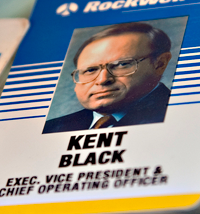 Starting Out, Moving Up
Starting Out, Moving Up
Black’s dedication to stepping up and giving back grows out of his roots on a Midwestern farm in an era when civic responsibility was part and parcel of life in a small community. “My dad was a farmer from many generations of farmers before him. When I was born, he was living in a tenant house on my grandfather’s farm about fifty miles north of St. Louis near Taylorville, Illinois,” said Black. “We lived in different places, but always on a farm.”
He came of age in Carrollton, Greene County, Illinois. This was in the 1950s, when for a teenager in small town, American life really was about sox hops, pep rallies, hotrods and drive-ins, at least some of the time. At center, Kent Black anchored the offensive line for the Carrollton Hawks’ split-T and called the defensive signals from linebacker in an Oklahoma 5-4 defense. “We had a couple of pretty good teams, but when I was a senior, and was the co-captain, we were sort of mediocre.”
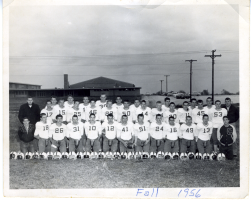
Being the captain of the football team with a cheerleader for a girlfriend was the stuff dreams were made of in those days, and Kent Black succeeded on both points. He was a junior and Karen Jones was a freshman at Carrollton High when they met and started dating, and three years later, the summer between his junior and senior years at the University of Illinois, they were married.
“I always wanted to build things,” Black said of his decision to be an engineer. “I grew up with Erector sets and building things in the basement shop. As far back as I can remember that’s what I wanted to do.”
He got that chance when he finished school and took a job with Collins Radio in Cedar Rapids, Iowa. Black’s first assignment at Collins was working on the radios for NASA’s Gemini project. “I ended up being the project engineer for one of the radios on the Gemini capsule when I was three years out of college. It was a backup radio that they never used, but I was thrilled anyway.”
In 1972, Rockwell International, a mega conglomerate with products and operations as diverse as space craft, commercial electronics, automobile components, printing presses and more, acquired Collins Radio. For Kent Black, becoming part of a bigger company meant more and bigger opportunities.
The job took Black to Dallas in 1976, and his career took a different direction, away from “real engineering” and into management and marketing. “Much to my surprise, I liked it,” he said. “I liked working with the customer. I took over a small division of Collins in Richardson, and for the first time it was like having my own company to run, marketing, finance, engineering, production, all of it.”
The relocation to Big D was an eye opener for Black in more ways than just his career. “In the late 60s I came to Dallas pretty regularly, and I developed some impressions of Texas that were pretty negative. Collins was a very frugal company. They’d put you on a Gulfstream, fly you down to Addison Airport, where the company bus would pick you up and take you to a hotel. If you wanted to eat, you ate there. There was no rental car. The bus took you to the plant in the morning, so you never saw anything. The impression was that there were no trees, just little boxy houses, so I had the impression that Dallas was a pretty barren place.”
That changed when Black became a Texas resident. “We loved it immediately,” he said. “It wasn’t that much different from what we knew in Iowa.” No, Texas wasn’t barren, and it wasn’t all that dry either.
“The very first day I went to work after I moved here, I went to a meeting my predecessor had arranged at Tanglewood. That resolved the tree questions, and then I saw the lake. I had had a pontoon boat on the Cedar River up in Iowa, and I stood in the Tanglewood Tower and looked down at all those boats at Lowe’s Marina and said, ‘This is where I want to be.’”
Kent Black quickly became a living exemplar of the line, “I wasn’t born in Texas, but I got here as quick as I could.” The next twenty years included two short sojourns in California, but Black’s heart and home were in Texas, and he always came back.
Giving Back and Growing
The climb up the corporate ladder, taking on ever-increasing responsibilities for ever-increasingly complex and important projects, did not leave much time for community involvement. But this started to change when he came back to Dallas following his first relocation to California. “When I came back, I took over all the commercial electronics and then defense electronics, and it was at that time, ’81 through ’86, that I started getting involved in other things.”
Black started working with the Boy Scouts and the United Way, but his biggest contribution came with Association of Higher Education, an organization of all the colleges and universities in the Metroplex. “What really got me intrigued was the combination of the association and the University of Texas at Dallas. Being with a technical company, I recognized the benefits of having an engineering school nearby. Engineers need to be able to continue their education. The best place for them to go at the time was UT-Arlington, but it was not really convenient to everyone. So I led an effort to get an engineering school at UT-Dallas.”
This involved working with the state coordinating board, which had final approval on curriculum changes and, more importantly, working with the local politics of the thing. Education, particularly higher education, is a very political beast, with schools and communities guarding their turf vigorously, ever wary of someone or some institution seeking to intrude on their domain.
“UT-Arlington didn’t really want UTDallas competing with them. I made a lot of trips to Fort Worth for meetings with the chairman of Tandy [the Fort Worth based hobby and computer company, owner of Radio Shack] trying work out compromises on what we would do at UTD.” As a result of the work of Black and others, UTD got its engineering school in 1985, and “It has been incredibly successful,” Black added.
Black’s career was incredibly successful too. As he did “a pretty good job” with each assignment delegated to him, he moved upward from one position to another. During his thirty-four years with Rockwell, he was the executive vice president and chief operating officer of Space Systems, Rocketdyne, Collins Commercial Avionics, Defense Systems, and Graphic Systems businesses. He was also chairman of Rockwell’s Systems Development Center Board and a member of the company’s Corporate Strategy Committee. The company didn’t have a “president” in those days, so when Black moved up to the top spot, his title was Chairman of the Board, Executive Vice President and CEO.
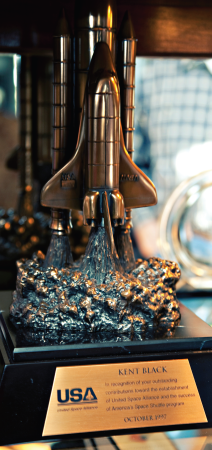
On retirement from Rockwell in 1996, he accepted the job as top man at United Space Alliance, a joint venture between Rockwell and Lockheed developed to pull all the responsibility for the Space Shuttle under one management team. It was not a job he had sought. It sought him.
“Rockwell and Lockheed had been butting heads over things for fifteen years, and when they finally got together, they couldn’t agree on someone to run it. Since I was a relative newcomer on the Rockwell side, I was acceptable to be the CEO of the new company.”
Black served in that capacity for almost two years before retiring again, spurred by what seems a widely shared desire of grandparents to spend more time with grandchildren, and, “I finally got sick of all the travel.” After a number of years commuting between Lake Texoma and California for Rockwell, Black and his wife put in another stint on the road, or rather in the air, between North Texas and a condo in Houston, where United Space Alliance had its headquarters.
Coming Home and Going Back to Work
Black has had a presence on Lake Texoma since 1982. “I bought a houseboat, but after a few years, Karen got tired of bouncing around in the boat at night, so I agreed to build a log cabin in Tanglewood in ’86. In 1992, the Blacks acquired the property that became the K-Bar-K ranch and built the house they now live in.
Building the log cabin came with a bonus, a son. Well, a son in all but blood, anyway. “I’d just graduated from high school and just started at Paris Junior College, when my girlfriend’s dad asked me if I’d help him erect a log cabin kit he had sold Kent Black,” said Scott Galyon, who was from Roxton in Lamar County. “That was in 1985. I said yes, came over there, and basically never left.”
Galyon came to Tanglewood each weekend to help Black finish out the cabin. At the same time, Black was buying property around Pottsboro for what would eventually be his retirement home and ranch. “In 1987, I got married,” Galyon said, “and moved over here full time to help Kent on the place, and I was also taking engineering classes at UT-Dallas.”
By Gaylon’s reckoning, his junior year at UDT was, “the worst year of my life.” He was unable to get into a number of the classes he needed to take, and he concluded that engineering was not for him. “Looking back, I decided that just wasn’t what the Lord wanted me to be,” he said. “So I stopped doing that and got an agriculture degree from A&M-Commerce.”
He combined his redirected education with on-the-job training and now serves as the ranch manager for the Blacks, working with two full-time and two part-time hands. “I’m a blessed person,” he said. “I have a wonderful family, and I work with people I love.”
But there is more to his relationship with the Blacks than business. “He’s become like a son,” said Kent Black, “and his two daughters are our granddaughters.” The Galyons live on the ranch, as does the Black’s oldest daughter Elizabeth. Daughter Nancy lives in Anna, and has two daughters of her own.
The K Bar K, spread over 1,400 acres, is a “cow-calf” operation, with a base breeding herd of mother cows and bulls. Each year’s calves are sold between the ages of six and twelve months, along with culled cows and bulls, except for some heifers retained for breeding herd replacements. The pride of the spread is Gentleman Jim, a 2,500 pound bull about the size of a Volkswagen.
“I’m busier now than I was when I was working,” said Black, and some of the reasons are the duties he takes on for various groups in the county. “The biggest thing right now is the construction of the Reba’s Ranch House,” he said. “I’m the board member responsible for overseeing the construction.

“Steve Cook, a realtor here in town, and I became friends years ago, and in 2006, he asked me to joined the TMC Foundation board. Because it had been a public hospital, when it was sold, the net proceeds of the sale had to stay public, so they were transferred to the new foundation, which was renamed the Texoma Health Foundation.
“They elected me finance chairman because of my business background, and we started getting the finances in better shape. Then we decided we wanted a really top notch executive to run it, and we started looking. We hired Michelle Lemming in 2007, and that’s the best thing we ever did. She is outstanding. Not only is she a good promoter and organizer, but she can really do the numbers as well. She’s really good on the financial side.”
Black’s experience and recognized skills in many areas make him a goto guy when local groups are looking for help. Before the THF, he served on the Grayson County Airport Board. “Since aviation was in my background, I thought that would fun,” he said. “I was on the board for two three-year terms. I was chairman the last term and then had to step down, but I served again. That time, after about a year, the county decided to merge the board with the Regional Mobility Authority. I was on both boards, so when they merged them, my two jobs became one.”
RMAs had been created by constitutional amendment in 2001. Their status as independent governmental entities gave them authority over all manner of transportation-related operations. And more importantly, they could raise money in much the same way more traditional public organizations such as county governments could. The Grayson Regional Mobility Authority is one of only six in the state.
Typically, the extension of U.S. Highway 289 from Southmayd to Pottsboro and beyond would have been a project for the GRMA, “but we had no money and no staff,” said Black, “so all of us came to the conclusion to just let the county do it, and we’d try to help out on the side. Gene Short, one of the county commissioners, took the lead, and I helped negotiate the contract.”
The Builder
To the community projects they embrace, Kent Black and other former business leaders like him, bring the well developed habit of getting things done. They are all builders in one form or another. Their organizational skills are important as is their ability to understand how the many small segments of a project come together to produce the whole. Even more important are their motivational talents, the ability to share their vision and to help others see the value in the goal and work for it as well.
Kent Black, who once reached for the stars, now brings that vision to improvements that directly affect the lives of his neighbors—a better health care system, improvements in education, enhanced ways of getting from here to there, and something as basic as a new fire truck or ambulance for his rural community.
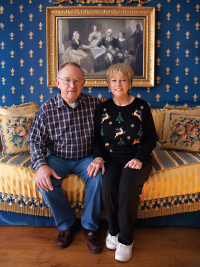
“I know it sounds a little corny,” he said, “but I’m a great believer in America and the way we do things here. The freedoms we have, the opportunities we have. I come from a small family farm, and look at all the opportunities I’ve had. You can’t do that everywhere in the world.
“I really believe in the freedoms that are built into our system, starting with the constitution. I believe in the capitalistic, free enterprise system we have. There’s no question in my mind that we have the best free enterprise system in the world, which is one of the reasons we lead in so many ways.
“I just believe you should put something back into the system. And of course, some aspects of it are just fun. Building the Ranch House, I love it, even though I get frustrated sometimes. I just like to build things.”
Editor’s Note: Texoma is fortunate in having a wealth of people who have accomplished much before retiring and moving here to live. For people like that, finishing one career is often only the prelude to starting another. They bring the habit of achievement to everything they undertake, and more often than not their skill, talent, and drive are turned to giving back to the community they now call home.

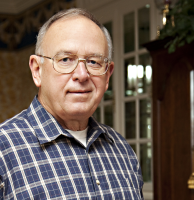
Thank you, Mr. Black. For providing a young man the opportunity to work with and support Rockwell’s finest executives. Would you believe I am still in the video conferencing industry and loving every minute if it. In large part thanks to you.
God Bless you and your family.
Greg Thener
Kent
Good to see you. Are still kickin Freda and I are in Florida but suspend most of our time in our motorhome maybe we will. Stop by the next time ewe are going through Texas. All the best.
Bob & Freda
TELL THE BLACKS I SAY HELLO. I WAS A DRIVER AT ROCKWELL INT. DROVE FOR MR AND MRS BLACK IN CA. GOOD TO SEE THAT THEY ARE IN GOOD HEALTH . I STILL SEE MR BEALL FROM TIME TO TIME IN NEWPORT BEACH CA. GOD BLESS IF I GET DOWN YOUR WAY I WILL STOP AND SEE YA